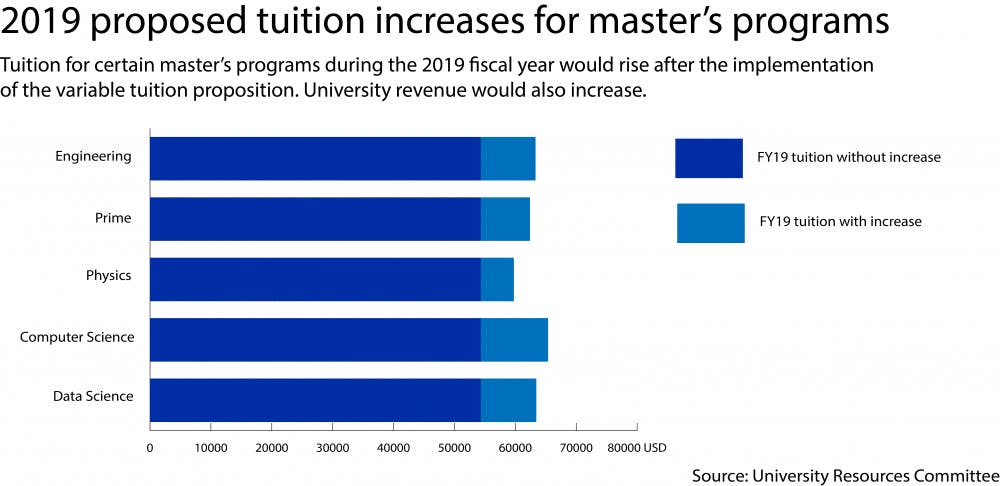The Corporation has approved tuition increases of at least 10 percent in five master’s degree programs — computer science, engineering, innovation management and entrepreneurship, physics and data science — according to a recent University Resources Committee report. The increases follow the decision to apply variable tuition rates to these programs based on market prices — in line with tuitions at peer institutions — according to Provost Richard Locke P’18. The University expects $830,000 in additional revenue from these increases for the fiscal year 2019, according to the URC report.
“Under 100 students” will be affected by the increases, said Shayna Kessel, associate dean of the Graduate School. Current students will still pay “the tuition they were admitted with.”
The decision to change tuition rates for each program “was based on an analysis of how we were pricing tuition for master’s programs as opposed to our peers,” Locke said. The University’s current tuition rates sit at the low end of pricing compared to peer institutions, according to the URC report.
The Graduate Student Council hopes the tuition increases will not affect the accessibility of these programs. “To ensure that an advanced Brown education in these fields is equally accessible to students with financial need, the GSC will advocate for sufficient financial support on behalf of these prospective students,” President of the Graduate Student Council Alastair Tulloch GS wrote in a group statement to The Herald. “It is imperative that students from all income groups are permitted the opportunity to pursue advanced degrees, and we are confident the University will support this commitment. The GSC will also work with the graduate students in these departments to ensure their needs are being met to account for the considerable increase in tuition.”
Alexis Grant GS, chair of master’s advocacy for the Graduate Student Council, believes the changes in tuition will create a larger burden on master’s students in the affected programs.
“The cost of programs is already high, and there isn’t much funding for master’s students, especially those outside of STEM fields or for international master’s students,” Grant wrote in an email to The Herald. “The higher cost will make the burden of debt larger for the students who cannot pay out of pocket.”
Locke acknowledged some students may be worried about covering the tution increases, but emphasized that “the money literally goes back into supporting students,” Locke said.
According to a survey of master’s students conducted by Grant in fall 2017, more students went into debt after enrolling in a University master’s program. Forty-three percent of master’s students had no debt at the time of surveying, but before coming to the University, 61 percent of master’s students had no debt.
“The majority of students enrolled in master’s programs … are self-supported,” according to the Graduate School’s website.
The move to change tuition to a different rate from the undergraduate rate will give “us flexibility to be responsive to different markets,” Locke said. Under the uniform tuition rate,“we were locked in to how much we could charge. … The way that we worked around it is we had a tuition and then we had a program fee, only so that we could do what we wanted to do.”
Kessel believes the new tuition rates can benefit students. “Variable tuition allows departments to offer more financial aid if they choose,” Kessel said. From the tuition revenue, “50 percent of the pot goes to the University and 50 percent goes to the department, whatever the cost.”
Though variable tuition rates are slated to apply to only five programs next year, they may be extended to other programs in the future, Locke said. Under these variable tuition rates, certain programs could possibly have lower tuition than they would have otherwise had under a uniform tuition rate, Locke said.
“When people apply to Brown University, they don’t think, ‘let me go to Brown because it’s the discount university,’” Locke added, implying that the change would not affect future application cycles. But “if it turns out we overshot, we can adjust.”
Grant believes that increases in tuition may be worth the cost if the quality of education improves. “If the cost is higher but the quality is better, it’s a trade off that I think people would be willing to pay for,” Grant said.

ADVERTISEMENT




